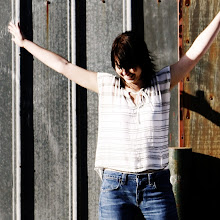Dusk
a proposed exhibition

Christopher Bucklow, Tetrarch, 1.11 pm, 11th January, 2003, Unique Dye Destruction Print, 40.25 x 54.5 inches
British artist Christopher Bucklow’s series Guests and Tetrarchs focuses on self-identification and reflection through depictions of illuminated figures that each represent a facet of the artist’s psyche. The artist’s technique incorporates two simple and ancient artistic methods, pinhole photography and tracing the human shadow. The process begins with the artist outlining his subjects’ shadows on a large sheet of aluminum. He then applies pin-holes within the traced figure outline, which is in turn used as the camera’s lens, he mounts the foil onto a home-made camera with color photo paper mounted on the back of the camera. Different intensities of sunlight, time of day and exposure give each piece a variation in light and color. The result is a magical, celestial-like standing figure that looks as if it is emerging from the atmosphere. These figures emit light as an energy that represents life and elements of the human spirit.

Michael Flomen, Contact, 2001, Gelatin Silver Print, 44 x 34 inches
Michael Flomen uses alternative processes combined with new techniques to create his work. His images are photograms made at night in the outdoors including grass fields and streams; the artist uses light-sources such as fireflies, snow and water to expose the image. These different sources create an abstract image but are derived from the natural world. Ethereal and supernatural, light becomes the main subject in his work. Flomen attempts to reveal different energies in nature by taking his process to the field and documenting nature at its purest. His work depicts a visual parallel to natural energy and light sources on earth and to what the greater cosmos look like in the night sky. From organic, earthly elements, Flomen creates transcendent otherworldly images.
Florian Maier-Aichen, Der Watzmann 2009,
C-print,
86 3/4 x 62 1/4 inches
Inspired by 19th Century painting and photography of traditional European and American landscapes, Florian Maier-Aichen, creates abstracted versions of traditional landscapes. His work is often vast and atmospheric, taken from extreme aerial distances. Maier-Aichen begins by photographing landscapes with a large format camera, but most of the work is done after the image is taken when he digitally reworks sections of the image by adding or subtracting different elements as well as drawing and painting on the surface. The landscape of the artist’s native Germany is often the subject of his work as is Los Angeles where he spends part of the year working. A life lived in two different places as well as a combination of realistic portrayal of landscape and abstraction creates a duality in his work. The exhibition will showcase several works by Maier-Aichen including Der Watzmann 2009,
C-print,
86 3/4 x 62 1/4 inches and Untitled (Mount Wilson) 2002, C-print, 63 1/2 x 81 3/8 inches. Der Watzmann references an iconic 19th century painting by German artist Caspar David Friedrich; Maier-Aichen’s resulting image depicts a classic example of new meets old featuring an iconic image of The Watzmann paired with a techno colored sky. In his piece Untitled (Mount Wilson) he depicts Los Angeles and all it represents to him: “that landscape is still significant, it has a great meaning, it is the end of American pioneerism, it is the end of the American West and from a German aspect is also the end of the world.”

Eclipse Newspaper Blue, 2010, C-print, 40 1/8 x 17 inches
Sara VanDerBeek is an emerging artist based in Brooklyn whose photographs depict found objects and images as well as sculptures that she creates for the image and then destroys after it’s taken. Eclipse Newspaper Blue is an image of an image from a found newspaper of the 1969 lunar eclipse. The artist discovered the clipping while cleaning out the basement of her childhood home. This image, which the artist connected to on a personal level, depicts a point in history that many can remember and relate to. It is elements like these that VanDerBeek often incorporates into her work, personal objects that evoke a time and memory that is also a universal phenomenon. VanDerBeek’s work combines a Modernist and eccentric contemporary style and beckons to Max Ernst and Paul Outerbridge.
Through an examination of nature and its sublimity these artists convey a personal relationship with the world and environment in which we live. They show references to different periods of art history but each present a very contemporary voice. These artists, inspired by traditional methods, manipulate older techniques or combine them with new technologies to create images that allow viewers to see nature and the world in a new, fresh way.



No comments:
Post a Comment